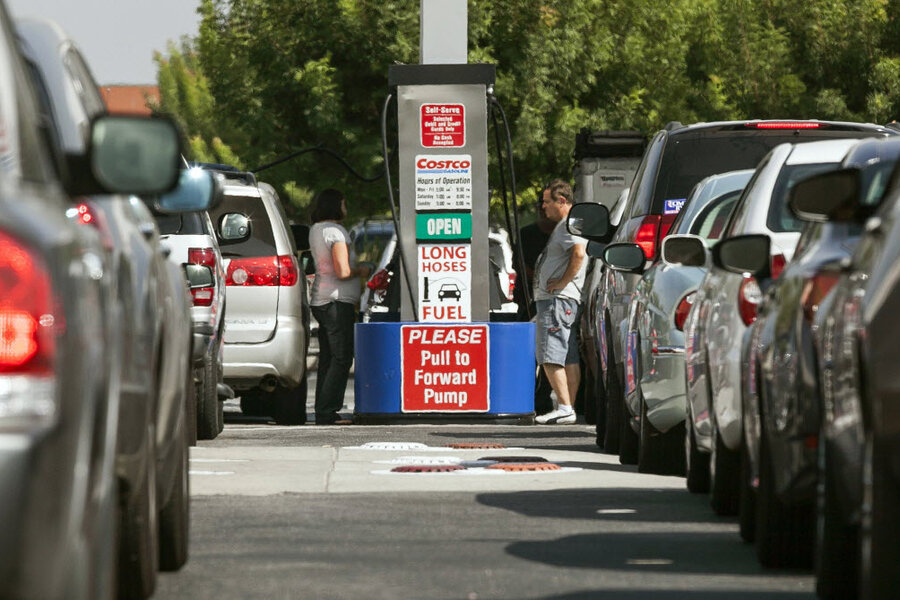California gas prices just keep climbing
| Los Angeles
Gasoline prices in California rose to another all-time high on Sunday after passing a four-year high a day earlier, according to AAA.
The four-cent-per-gallon jump Sunday was even bigger than Saturday's jump, which was just a fraction of a penny.
AAA reported in its latest update on Sunday that the statewide average price for a gallon of regular unleaded gasoline is $4.655. Saturday's average of $4.6140 was the highest since June 19, 2008, when it was $4.6096.
Sunday's price, like Saturday's, was the highest in the nation, with the Golden State leapfrogging Hawaii this week as the state with the most expensive fuel due to a temporary reduction in supply.
Californians are paying 24 cents per gallon more than motorists in Hawaii, according to the AAA report. In some locations, fuming motorists paid $5 or more per gallon while station owners had to shut down pumps in others.
"I seriously thought it was a mistake on the sign when we pulled in," said Nancy Garcia, 34, while filling her Honda Accord at a Chevron station in the Los Angeles neighborhood of Highland Park. She paid $4.65 a gallon for regular grade and said she couldn't afford to fill her tank all the way.
AAA's Daily Fuel Gauge report said the national average both Saturday and Sunday was about $3.81 a gallon, the highest ever for this time of year. However, gas prices in many other states have started decreasing, which is typical for October.
The dramatic surge came after a power outage Monday at a Southern California refinery that reduced supply in an already fragile and volatile market, analysts said, but the refinery came back online Friday and prices were expected to stabilize by next week.
Patrick DeHaan, senior petroleum analyst at GasBuddy.com, predicted the average price could peak as high as $4.85.
"There is some relief in sight but probably not for a couple of days. Early next week is when we may see some more significant declines ... but at retail prices, prices may climb for the next two to three days before they start to come down," he said.
When supplies drop, wholesale prices rise. Then distributors and station owners have to pay more to fill up their station's tanks. They then raise their prices based on how much they paid for their current inventory, how much they think they will have to pay for their next shipment, and, how much their competitors are charging.
A web of refinery and transmission problems is to blame, analysts said. The situation is compounded by a California pollution law that requires a special blend of cleaner-burning gasoline from April to October, said Denton Cinquegrana, executive editor of the Oil Price Information Service, which helps AAA compile its price survey.
"We use the phrase 'the perfect storm,' and you know what, this current one makes those other perfect storms look like a drizzle. I don't want to scare anyone, but this is a big problem," Cinquegrana said. "Run-outs are happening left and right."
Among the recent disruptions, an Aug. 6 fire at a Chevron Corp. refinery in Richmond that left one of the region's largest refineries producing at a reduced capacity, and a Chevron pipeline that moves crude oil to Northern California also was shut down.
There was some good news, however.
Exxon Mobil Corp. said a refinery in Torrance returned to normal operations Friday after the power failure Monday disrupted production for most of the week. State officials said with the refinery coming back online, prices should start falling.
Contributing to this report were AP writers Sandy Shore in Denver, Gillian Flaccus in Los Angeles, John Marshall in San Francisco and Gosia Wozniacka in Fresno.





